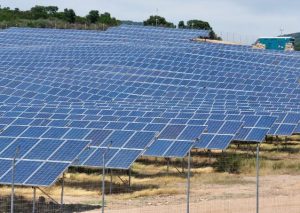Understanding Photovoltaic Cells: What Are They?
Photovoltaic (PV) cells, the bedrock of solar energy conversion technology, have sparked a revolution in how we harness the sun's power. These remarkable devices transform sunlight directly into electricity, offering a clean, renewable energy source that is increasingly becoming a cornerstone of global energy strategies. Let's dive into the specifics of what is photovoltaic cell, elucidating their design, operation, and the pivotal role they play in today's energy landscape, all articulated with the straightforwardness and vigor characteristic of American prose.

The Fundamentals of Photovoltaic Cells
At their essence, photovoltaic cells are semiconductor devices that convert light into electrical energy through the photovoltaic effect. This process involves several key steps:
- Light Absorption: PV cells absorb sunlight, with photons (light particles) transferring their energy to electrons in the semiconductor material, typically silicon.
- Electron Excitation: The energy from the absorbed photons excites electrons, propelling them from a lower energy state within the atom to a higher one, creating what are known as electron-hole pairs.
- Electricity Generation: An internal electric field in the cell directs these free electrons towards the front, creating a flow of electrical current when the cell is connected to an external load.
Composition and Structure
A typical photovoltaic cell consists of:
- Semiconductor Layer: Silicon is the most commonly used material, doped with other elements to create a p-n junction, essential for the photovoltaic effect.
- Front and Back Contacts: These metallic layers allow the current to be drawn from the cell for external use.
- Anti-Reflective Coating: This layer reduces the reflection of sunlight off the cell surface, maximizing light absorption.
Efficiency and Performance
The efficiency of a photovoltaic cell—how effectively it can convert sunlight into electricity—is a critical parameter. Modern commercial PV cells typically exhibit efficiencies between 15% and 22%, with laboratory prototypes achieving upwards of 25%. Factors influencing efficiency include the type of semiconductor material, cell design, and the quality of light absorption.
Types of Photovoltaic Cells
- Monocrystalline Silicon Cells: Known for their high efficiency and longevity, these cells are made from a single crystal of silicon.
- Polycrystalline Silicon Cells: These cells are composed of multiple silicon crystals and offer a balance between cost and efficiency.
- Thin-Film Solar Cells: Made by depositing one or more thin layers of photovoltaic material on a substrate, these cells offer flexibility and are lighter than traditional silicon cells but generally have lower efficiency.
Applications and Innovations
Photovoltaic cells are versatile, powering everything from residential homes and commercial buildings to remote sensors and space satellites. Ongoing research aims to develop new materials, such as perovskite, and technologies that promise higher efficiencies, lower costs, and broader applications, further expanding the potential of solar energy.
In conclusion, understanding what is photovoltaic cell reveals not just the intricacies of their operation but also the vast potential they hold for shaping a sustainable energy future. As technology advances and the world increasingly turns towards renewable sources of energy, photovoltaic cells stand as a testament to human ingenuity and our commitment to harnessing the power of the sun.
